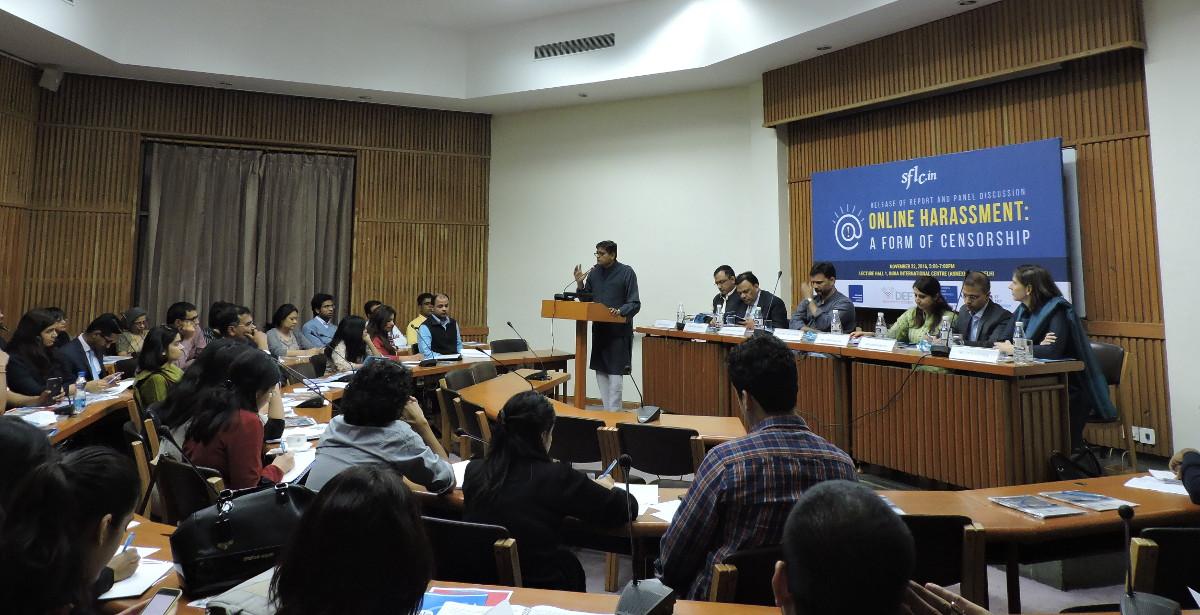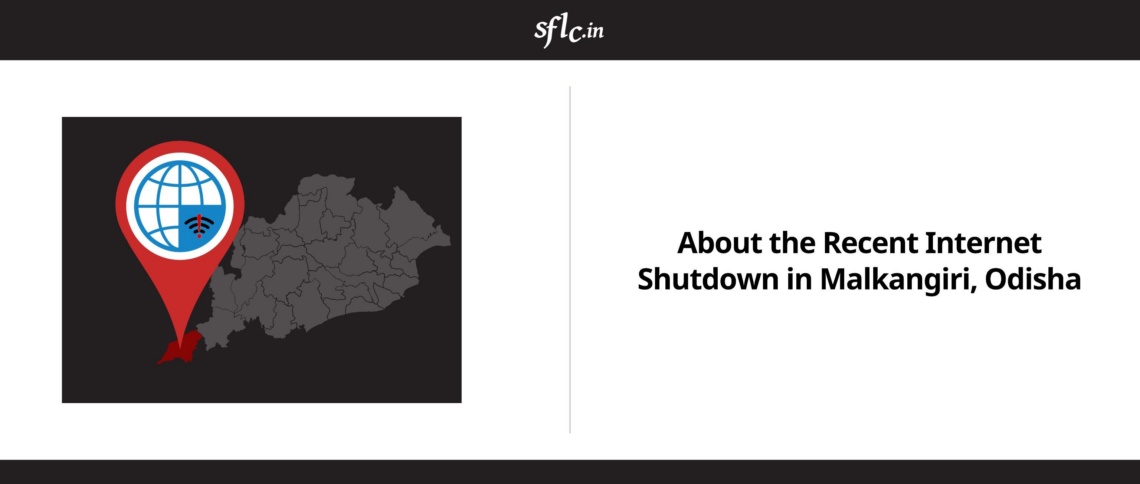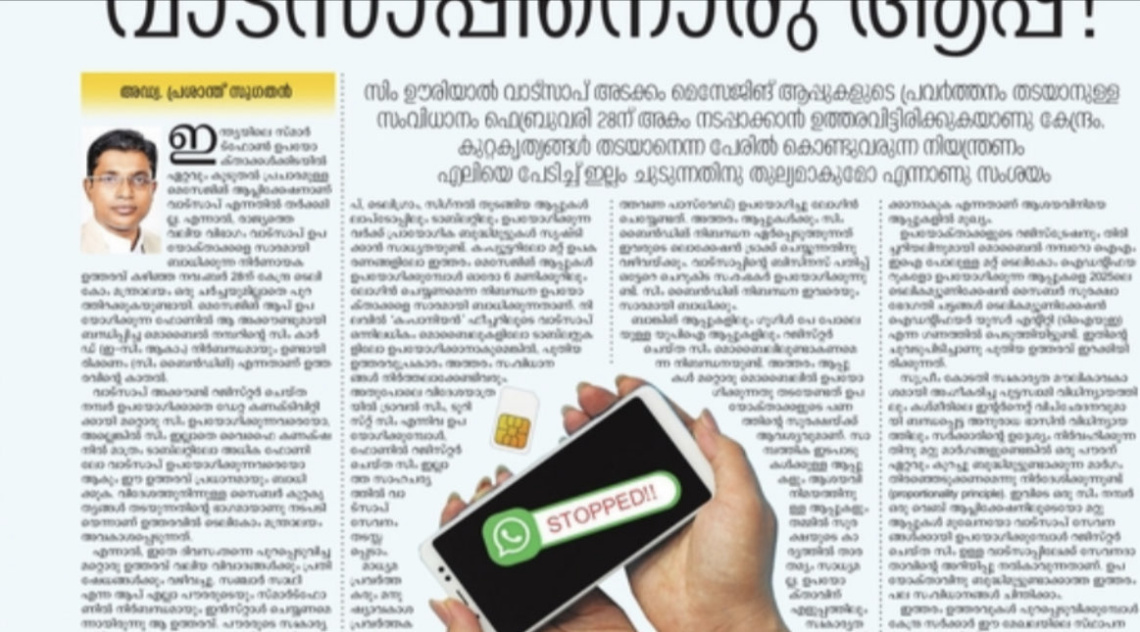Mindless abuse and threats of violence are commonplace on online speech platforms like social media websites nowadays, says a new report titled, ‘Online Harassment: A Form of Censorship’, by SFLC.IN, a Delhi-based not-for-profit legal services organization.
Greater transparency and responsiveness in content moderation processes adopted by such platforms, along with renewed focus on capacity building for law enforcement agents could go a long way towards addressing the issue, finds the report. Attention should also be paid to educating people about existing mechanisms for combating online harassment, the report adds.
“There is a need for adequate legal protections against online harassment. However, this should not be seen under any circumstance as an endorsement of draconian laws like the now-repealed Section 66A of the Information Technology Act, 2000 (IT Act), which lent itself to wanton abuse due to its over-broad and ambiguous language”, said Baijayant Panda, Member of Parliament, Lok Sabha, also one the interviewees featured in the report.
Free speech should not be restrained, unless it is transcending from talk to action: MP Baijayant Panda at SFLC.IN report launch.
Delivering the keynote address at the report launch, Mr Panda said, “Speech itself should not be restrained or shut down forcibly unless there is imminent clear and present danger of violence, or break down of public order.”
At the same time, there must be harmony between the laws that impact us in real lifeand those that impact us online. Online world can be liberating but if someone is threatening you, they should notbe able to get away with it by claiming free speech protections, he said.
The report is supported by the Software Freedom Law Center, New York and Jigsaw, a New York based think tank, and features dialogues with key stakeholders, including social media platforms and 18 prominent individuals involved in the debate around online hate speech and harassment.
The individuals interviewed for the report include legislators, journalists, civil society actors and targets of online harassment campaigns, who have had first hand glimpses at the plight of the harassed. The list of individual interviewed is provided in Editor’s notes below.Talking about the report, Mishi Choudhary, Executive Director at SFLC.IN said, “We have been studying online harassment as form of censorship that forces people out of participation in online policy discourses. This report’s goal is to explore this phenomenon in detail, document how people experience the effects of harassment in their lives as we work towards finding a workable and understandable ways to address the problem.”
“Online platforms presently suffer from lack of trust when it comes to guaranteeing users’ safety, and the significant levels of human intervention in content moderation further dilutes this trust as it involves personal biases”, noted Arvind Gupta, National Head, Information and Technology, BJP – another one of the report’s interviewees. “As we move towards digital democracy, it is absolutely critical for platforms to stay neutral. Platforms need to build a system of trust and non partisanship by heeding user feedback and implementing broad-based changes to their content moderation practices on the basis of this feedback”, he said.
Calling human intervention as of ‘paramount importance’ in maintaining civility on platforms, Chetan Krishnaswamy, Country Head, Public Policy, Google India said, “Considering the volume of content being generated, technology tools are at times necessary in content moderation. However, human involvement is still required to sift through the content and determine what is right and what is wrong.”
Dr. Anja Kovacs, Director of Internet Democracy Project, said that more law was not the solution to tackling the issue of online harassment. “I think it’s really important to not have the same standard for all intermediaries. Even though in this debate of Facebook versus Twitter, Facebook is often seen as the more safe platform but many activists still prefer Twitter because it allows anonymity.”
Representing that element of the state that enforces‘reasonable restrictions’ on freedom of expression, Anyesh Roy – Deputy Commissioner of Delhi Police (Cyber Crime) said,“We often face jurisdiction issues with platforms; who sometimes refuse to share information. All platforms with consumers in India should respect the law of the land and share information when requested by the law enforcement.” He also talked about the need to evolve an “entire ecosystem and mechanisms within the intermediaries where grievances are addressed and everybody is able to enjoy their freedom of expression.”
Mahima Kaul, Head of Public Policy, Twitter India, talked about the policy changes introduced by Twitter last week where people can mute certain phrases or conversations. “This is indicative of how seriously Twitter addresses the issue of harassment and has a policy against hateful conduct.”
Saikat Datta, Cyber Security Consultant and Consulting Editor at Scroll.in, said,“If there is a certain amount of ugliness that reflects on social media platforms, we should be able to recognize the horrors of society and take action upon them.” Saikat added how ‘privacy’ should be a fundamental right as it has huge implications on, among other things, free speech.
The report suggests the following safeguards to social media users against online harassment and abuse:
- Thoroughly screen the personal information shared online
- Consider dedicating an email-ID for social media use
- Avoid uploading photos that identify you along with your location to protect your identity
- Use a pseudonym, if anonymity is relevant in your online activities
- Keep a tab on information others post about you to ensure no personally identifiable information reaches unwanted hands
- Run Internet searches on yourself to monitor unauthorized information appearing online
- Use stronger passwords, and review your service providers’ privacy policies
The report further recommends the following steps to be taken in cases where users find themselves at the receiving end of targeted online harassment campaigns:
- Report incidents to the concerned service providers
- Block the perpetrators, when the perpetrators are limited in number
- Approach law enforcement as a last resort, when there are real threats to physical safety
- Seek help from social media influencers
- Record all communications with perpetrators, service providers and law enforcement
- Seek support from friends and family
For platforms like Facebook and Twitter, the report suggests the set of following 11 draft best practices to limit online harassment, with the express condition that these proposals require substantial deliberations before being formalized:
- Have in place rules that prohibit hateful, disparaging, and harassing content on intermediary networks; rules must be clearly articulated and designed for easy consumption; include illustrative examples for each category of prohibited content
- Generate awareness within user community on prohibited content; notification systems, promotional banners etc. could be leveraged for the purpose
- Enable easy and accurate reportage by users and third-parties; include easily identifiable “report” buttons; provide adequate opportunities to substantiate why content must be removed
- Have clearly defined review processes prescribing (where possible) objective standards for determining permissibility; refer to applicable national laws
- Deploy dedicated teams to review and disable content; provide periodic training to review teams on efficient identification and disablement;
- Review reports and disable content within a prescribed time frame (24/48/76 hours)
- Provide opportunities to creators of disabled content to justify themselves; include provisions for timely restoration of disabled content and reinstation of terminated accounts
- Share best practices within stakeholder community; contribute to building effective multi- stakeholder norms for tackling prohibited content
- Liaise with law enforcement; aid in investigation of reported offenses in consonance with established legal procedures
- Work with other stakeholder communities; engage with civil society organizations and academia on awareness generation; conduct trainings/workshops for law enforcement officials on reportage mechanisms so as to facilitate effective handling of complaints
- Promote counter-speech; invite counter narratives from public figures; offer incentives; conceptualize additional means to promote counter-speech
“This is but the first in a series of studies that SFLC.in intends to undertake in this domain. We invite people to join us as we attempt to build a sustainable dialogue around online harassment, as participatory and result-oriented initiatives are required to arrive at a definitive solution,” Ms. Choudhary added.
###
Editor’s Notes
The list of interviewees for the ‘Online Harassment: A Form of Censorship’ report is below (in alphabetical order):
- Abhinandan Sekhri, Co-founder, NewsLaundry
- Arvind Gupta, National Head, Information and Technology, BJP
- Baijayant Panda, Member of Parliament, Lok Sabha
- Bishakha Datta; Executive Director, Point of View
- Hartosh Singh Bal; Political Editor, The Caravan
- Inji Pennu; Writer, activist
- Karuna John; Freelance journalist
- Kavita Krishnan; Secretary, All India Progressive Women’s Commission
- Meena Kandasamy; Poet, writer, activist
- Navrang S B; Former Head of Social Media, BJP
- PrabirPurkayastha; Editor, Newsclick
- Rajeev Chandrasekhar; Member of Parliament, Rajya Sabha
- Rakshit Tandon; Cyber Security Expert and Consultant
- Ravish Kumar; News Anchor, NDTV India
- Rega Jha; Editor, BuzzFeed India
- Rohit Chopra; Associate Professor, Santa Clara University
- Saikat Datta; Journalist
- Sheeba Aslam; Journalist, scholar and Islamic writer
A copy of the report can be accessed here.



